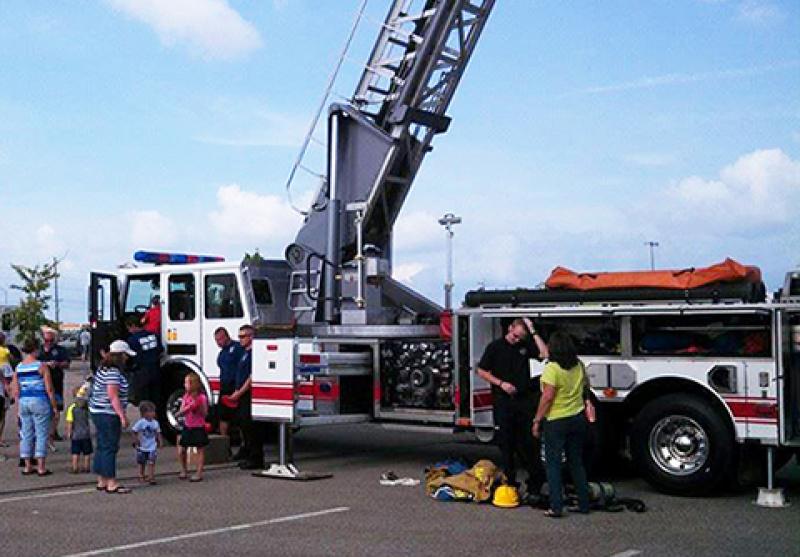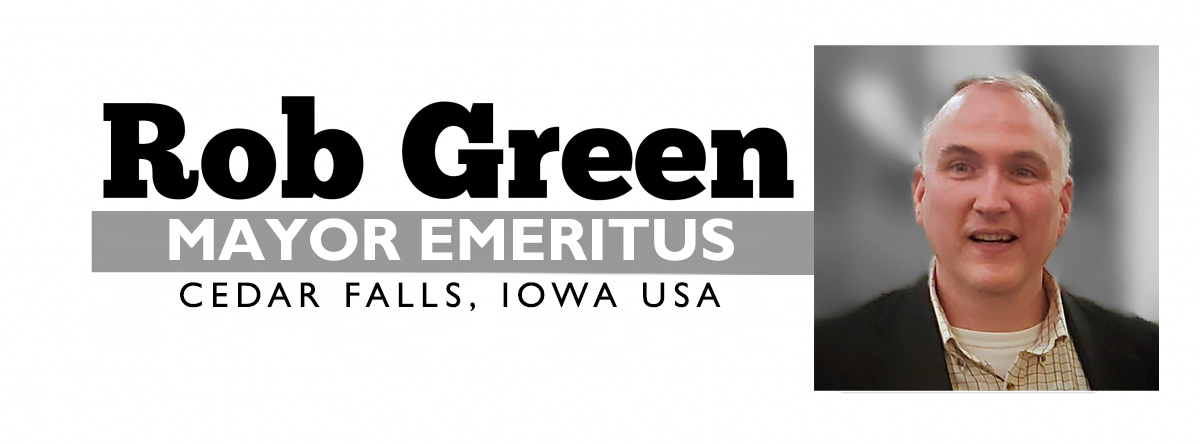
Proper fire/rescue coverage is one of the most important topics facing our community; few other municipal issues are likely to result in injury or loss of life if poor choices are made. For that reason, I’ve invested more time into learning about fire/rescue-related issues than any other topic during the campaign; over the past six months, a diverse group of city stakeholders have provided me with input both on and off the record. These include:
-- President of the Cedar Falls Firefighters Association (Local #1336)
-- Director of Public Safety, City of Cedar Falls
-- Cedar Falls Fire Chief
-- Current and retired Cedar Falls firefighters
-- Surrounding community firefighters
-- Current and former Cedar Falls City Council members
Each of these stakeholders desires effective and efficient fire/rescue service for our community, and I respect the efforts and decision-making that have gone into "where we are today". Still, disagreements abound in what constitutes an acceptable level of fire/rescue coverage for our city, and how we go about achieving it. And not surprisingly, these discussions have led to more questions than answers.
I wish I could give you a simple “Yes, I support this” or “No, I’m against that” answer for all aspects of fire/rescue, but in cases where more investigation is needed, I’ve noted the questions I’m asking and my overall impressions so far as a concerned and inquisitive citizen.
1. Public Safety Officer (PSO) Program
I believe the intent of the Public Safety Officer program is sound -- putting a first responder on-scene quickly to make a real difference when seconds count. A properly-trained PSO can identify fire hydrants, perform a quick walkaround of a building, account for medical requirements and missing persons, and be ready to go in a firefighting ensemble with the engines arrive. These are all critical tasks on the fireground.
I’m concerned, however, that that we risk shortchanging the safety of citizens if PSO’s substitute for -- or even replace -- our full-time career firefighters. My own advanced shipboard firefighting and maritime law enforcement training makes me appreciate that law enforcement and fire/rescue require unique cultures, mindsets, experiences and training to build and maintain proficiency. For that reason, I don’t believe firefighters and police officers are 1:1 interchangeable, nor should they be expected to be when it counts.
Considering the significant national publicity generated by police incidents over the past few years, we should ensure that our police have the training and focus to be excellent law enforcement officers. If they can also be helpful in a fire -- and have equipment in their police interceptors to do it -- that’s terrific. But I don’t believe fire protection should become a core proficiency for our police officers through the PSO program.
2. Firefighter Staffing Levels
With the current drive to replace career firefighters with public safety officers (PSO’s), I am concerned about our staffing levels. We need trained and capable leaders to direct activities on the fireground; skimping on personnel prevents that, and doesn’t allow us to build the necessary leadership and skills for promoting from within. With our current staffing levels, are we leaning too heavily on Waterloo Fire Department and other cities for mutual assistance? Are we unfairly taking advantage of them? How do our firefighting staffing levels compare with similar-sized cities, and how well do we adhere to the guidelines of NFPA 1710? Where we deviate, what’s the justification?
I also appreciate that firefighting is foremost a team-based event. Even an initial response requires three or more people who inherently trust each other, and who have trained for and experienced emergency scenarios so well that they can anticipate their teammates’ next moves. This requires both an investment of both time and money on the community’s part, and I’m concerned that our current staffing levels don’t provide for this.
3. Fire-Based Emergency Medical Services (EMS)
Since the early 1980’s, Cedar Falls has contracted out citywide emergency medical services to Covenant / Sartori Hospital; Waterloo Fire Department has retained its EMS services Which is the better model? While I’m generally in favor of outsourcing / privatizing for efficiency, EMS is one of those “must do” services that I believe the government ought to provide directly. So on principle, I’m leery about outsourcing it -- even though it’s been done for close to 40 years. As I understand it, many of the service calls to the fire department are actually for EMS issues, not actual fires. That being the case, I believe EMS back into the CFFD itself as a core competency is worth investigating, as an essential municipal service.
4. North Cedar Fire Station #2
There’s significant history behind this issue. The station opened in the 1970s, and was closed in 2012 in response to decreased call volumes in that area following the 2008 flood. Those firefighters were redirected to the southern Station #3 at Main and Greenhill -- an area currently seeing major growth. I would love to see a reopened Station #2 as a visible commitment from the City of Cedar Falls toward development and growth in North Cedar, but the population count (2,040 according to the Census’s 2015 American Community Survey) makes it difficult to justify a reopening. That said, what population size in North Cedar would justify fielding the personnel necessary to reopen and staff that station?
Fortunately, capital improvements in North Cedar (like the renovation of North Cedar Elementary, streetscapingand beautification along Center Street, and the development of the Northern Cedar Falls Industrial Park) give me hope for a population resurgence north of the Cedar River; I strongly support these improvements, as a means to foster balanced growth and encourage development in all parts of our city -- which can then justify reopening Station #2.
5. New Public Safety Building
The process, cost, location and justification for the new public safety building have raised a number of red flags:
Process: As a capital improvement expenditure, it will be built through the city’s General Fund; as a result, it won’t require voter input for the expenditure as a bond measure would. I believe the city needs to put more effort in resident engagement to explain why a new public safety building is necessary at this time. To me, it’s a “nice to have” and not a “need to have”.
Cost: Originally the Public Safety Building was targeted at $7M, then $9M, and now $11M. Examining the building specifications, this facility will simply relocate existing services and capabilities, rather than enhancing them; that being the case, what do we as taxpayers “get” from paying for this $11M new facility right now?
Location: Originally, the building was proposed for 1st and Hudson, on the site of the current Iowa State Patrol District 9 office (built in 1963, back when 1st Street was U.S. Highway 20). Public Safety Director Jeff Olson tells me that the city owns the land, but the state owns the building -- and the state is not willing to vacate at this time. Instead, the city has abandoned that location and is planning to build on Greenhill and Main instead, with a land acquisition cost of over $500,000 (according to InVision documentation). Did city staff prematurely give up on the effort to reacquire the Iowa State Patrol property on 1st and Hudson? Given the permanence of the new Public Safety Building, could we keep our options open for another year or two, to reacquire the property? In short, are we rushing this decision?
Response Times. One of the key factors in locating an operational rescue facility is the response times to various parts of the city. I’ve heard the justification that the new building will improve fire response times, but how can that be the case when Fire Station #3 is already at that location? Also, more critically, a traffic study contracted by the city in 2015 to gauge possible locations and city response times was based on the road framework at that time, not in consideration of the significant changes (and planned changes) in some areas since then (including University Avenue, Main Street, and 1st Street reconstructions). As one of the proposals for Main Street involves cutting down to single lanes with a turn lane and medians, I believe it’s imperative to conduct this traffic study with more timely data.
Public Perception. A final location concern I have for the Greenhill & Main location ties to the city’s perceived push (or at least acquiescence) to shift the center of Cedar Falls southward. Given the planned relocation of the new Cedar Falls High School and the Sartori Hospital replacement to South Cedar Falls, I believe we’re broadcasting that we don’t value service or development in our original neighborhoods -- our existing infrastructure. In my mind, relocating our police and fire services to South Cedar Falls only adds to that perception. So if it IS basically a done deal, then city leaders need to realize the unintended consequences for the rest of Cedar Falls, and how we’ll grow as a city in the years ahead.
6. Contracted Fire Services for the University
The university does not field a campus fire department. Instead, it pays the City of Cedar Falls to provide fire protection services to campus. As I understand it, these funds are added to the city’s general fund; I believe the monies should be earmarked for the Cedar Falls Fire Department for training and equipment. It simply doesn’t make sense to me for firefighting funds to be expended on city needs other than firefighting. If this is actually the case, I strongly believe that this payment model needs to be revisited in the near-term.
7. Engagement with Black Hawk County Emergency Management
Currently, BHCEMA is located at the City of Waterloo’s Newell Road facility, about two miles east of town. I believe that location is inadequate for effective county-level interagency coordination, training, and service as an Emergency Operations Center. As plans go forward for the new public safety building, I believe we should be actively pursuing a co-location of BHCEMA offices in that new facility, for improved service both to Cedar Falls and surrounding cities in Black Hawk County (as well as to become a desirable location for statewide training and exercises). BHCEMA is charged with a critical coordination and education role for our county, and I’d like to see them in a location which facilitates that important work.
8. Earning Trust / Fostering Communication
The Firefighters Association’s ‘Vote of No Confidence’ in 2014 against city council, mayor and staff carries lot of backstory here that I’m simply not privy to. What I’ve gathered, though, from a variety of stakeholders, is a lack of collaboration, miscommunication, and some residual prejudices from past ‘wrongs’. As a former military guy, I believe that an operational and administrative chain of command exists for all city staff, and it must be respected and followed. That said, I also believe that, without a designated city ombudsman, it falls to City Council members (as independent decision-makers, influencers and advocates) to remain actively available to staff in addressing matters not pertaining to collective bargaining or other prohibited topics. . Regular, open dialogue promotes trust and mutual respect, and pre-empts the perception that concerned voices aren’t being heard.
Summary
The above positions and questions reflect my understanding of the state of fire/rescue response in Cedar Falls today. I’m grateful to those who’ve invested their time in educating me on these topics, and hope I’ve gotten my facts straight. Where I I haven't, I'm open-minded to look at new information and will explain any changes in position accordingly.
